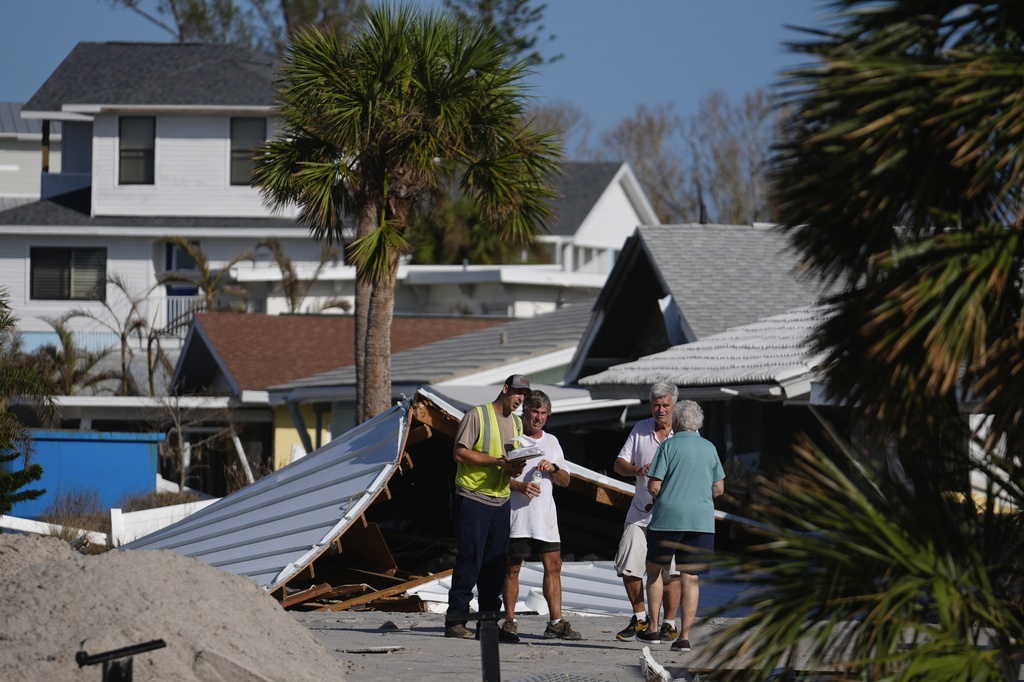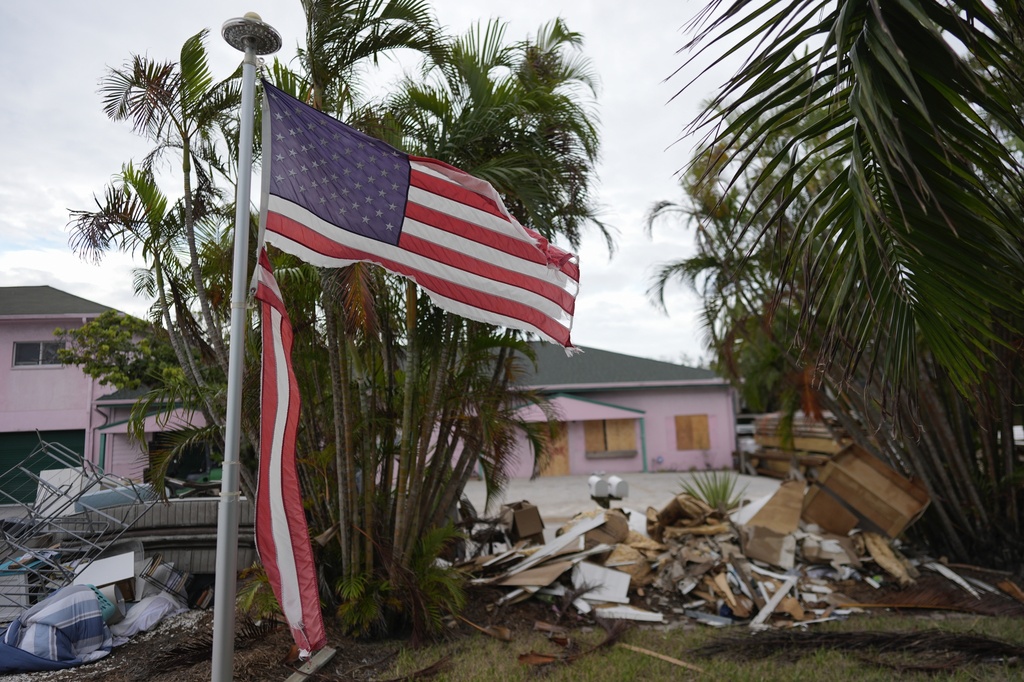GiveDirectly Boosts Hurricane Aid with Direct Cash Payments \ Newslooks \ Washington DC \ Mary Sidiqi \ Evening Edition \ Nearly 1,000 hurricane-affected households in North Carolina and Florida will receive direct cash support through GiveDirectly’s new relief program. Using advanced AI tools, the initiative will streamline aid distribution, reducing wait times and enabling recipients to prioritize their own needs. The model aims to redefine disaster aid by offering a faster, flexible approach that could inspire future improvements in the field.

Direct Cash Aid for Hurricanes Quick Look
- Innovative Relief: GiveDirectly provides $1,000 direct cash payments to hurricane-hit households.
- Tech-Driven: Google’s AI tool identifies target areas quickly.
- Self-Directed Support: Cash payments allow recipients to choose the aid they need most.
- Swift Processing: Reduces traditional application hurdles, cutting wait times drastically.
- Future Potential: Aims to be a model for cash-based disaster relief programs.
Deep Look
In an unprecedented approach to hurricane relief, the nonprofit organization GiveDirectly is launching a direct cash payment program to assist nearly 1,000 households affected by Hurricanes Helene and Milton in North Carolina and Florida. On Friday, each selected household will receive $1,000 in direct cash aid, a model that diverges from typical disaster relief methods by allowing recipients to control how they use the assistance. GiveDirectly hopes this streamlined and dignified approach will transform disaster philanthropy in the U.S., potentially inspiring both private organizations and government agencies to adopt similar rapid cash-assistance models.
Using Google’s SKAI tool, an AI-powered technology designed to locate areas with high poverty levels and significant storm damage, GiveDirectly has identified communities in need of aid with remarkable speed and precision. Starting Tuesday, residents in these targeted areas received notifications inviting them to enroll in the program through Propel, a smartphone app commonly used to manage government benefits like SNAP (Supplemental Nutrition Assistance Program). Once registered, recipients will receive the cash aid through the app’s debit card feature, giving them immediate access to funds. According to Laura Keen, a senior program manager at GiveDirectly, the process not only reduces the paperwork burden but also gives families a sense of control over their recovery. Keen emphasized that this approach “removes much of the burden of applying, and is intended to empower people to decide for themselves what their most pressing needs are.”
Direct cash aid has shown considerable benefits in past disaster responses, offering flexibility that typical donations of clothes, blankets, and food often lack. Cash allows households to meet individual needs, such as paying for temporary lodging or covering childcare costs when schools are closed—expenses that are essential for a smooth recovery but difficult to address through in-kind donations alone. “There is an elegance to cash that allows individuals in these types of circumstances to resolve their unique needs,” Keen stated, explaining that cash assistance reduces reliance on high-interest loans and helps families avoid accumulating credit card debt.
GiveDirectly’s model has established its effectiveness through global poverty-relief programs and first made its mark on U.S. disaster relief in 2017 after Hurricanes Harvey in Texas and Maria in Puerto Rico. Back then, enrollment required in-person processes and physical debit card distributions, often resulting in weeks-long delays. Today, AI-based area assessments and smartphone apps have accelerated enrollment to just days. Google’s SKAI tool analyzes aerial images of disaster zones, comparing them pre- and post-hurricane to assess damage levels and focus on the areas with the greatest need. The information is then cross-referenced with poverty data and sent to Propel, which promptly notifies eligible app users in the affected areas. Keen explained that this digital approach spares recipients from having to gather extensive documentation to prove eligibility, as the AI tools and poverty data analysis already confirm these factors.
Nonetheless, the program has limitations. Not all low-income households affected by disasters participate in government benefits or have access to smartphones, which are required to use Propel’s app. Further, in some parts of North Carolina, power outages have left entire communities without phone service, hampering their ability to access the app even if they have a device. Propel currently serves only five million of the 22 million SNAP households, and undocumented residents are not eligible for benefits, which means many impacted households are left out of the program’s reach. Keen acknowledged these challenges and noted that GiveDirectly is considering a hybrid approach, combining remote app-based enrollment with in-person outreach. However, this expansion would require increased funding. Thus far, GiveDirectly has raised $1.2 million for this initiative, including a significant contribution of $300,000 from the Conrad N. Hilton Foundation.
As the demand for more responsive and adaptable aid solutions grows, GiveDirectly’s program has caught the attention of both private and public aid sectors. FEMA, for instance, recently adjusted its own Serious Needs Assistance program, raising the relief payments from $500 to $770 to better meet rising costs of living in disaster zones. Yet, unlike GiveDirectly’s program, FEMA’s aid still requires households to complete a formal application—a process that can prove difficult during chaotic post-disaster conditions. Chris Smith, who previously managed FEMA’s Individual Assistance program, believes that adopting technology-driven solutions like GiveDirectly’s could help government agencies streamline aid distribution. However, he also noted that public programs must maintain a high level of accountability and transparency, which can limit their ability to adopt experimental models like those used by private philanthropies.
The concept of direct cash relief has gained traction in recent years in other contexts. The U.S. briefly experimented with a similar model in 2021, when the federal government expanded the child tax credit into monthly cash payments, drastically reducing child poverty during its short run. Research on guaranteed income programs has shown that recipients use funds for essential items like food, transportation, and retail purchases, underscoring the idea that cash enables people to meet their own needs more effectively than rigidly structured aid. Stacia West, founding director at the University of Pennsylvania’s Center for Guaranteed Income Research, emphasized that “there is no one who can budget better than a person in poverty,” underscoring the idea that people understand their needs better than external aid organizations.
Long-term direct payments could even help recipients build future resilience, which has already been demonstrated in other disaster contexts. For example, in 2016, Dolly Parton’s foundation provided six months of $1,000 monthly payments to families displaced by the Great Smoky Mountains wildfires, allowing recipients to focus on rebuilding. Similarly, the People’s Fund of Maui, established by Oprah Winfrey and Dwayne Johnson, offered $1,200 monthly payments for six months to residents affected by the 2023 Maui wildfires. Keen noted that if funding were available, GiveDirectly would be eager to implement an extended relief model, which would not only enable beneficiaries to repair their homes but also improve their disaster preparedness by fortifying their properties against future storms.
By demonstrating the benefits of a direct cash-based relief model, GiveDirectly hopes to inspire other disaster relief organizations and government programs to consider this approach. Cash aid, the organization suggests, represents a flexible, dignified way to deliver support while empowering individuals and families to make choices that best suit their unique situations. GiveDirectly’s program is more than an immediate response to Hurricanes Helene and Milton—it’s a potential model for a new era of disaster relief, one that emphasizes speed, empowerment, and adaptability.







